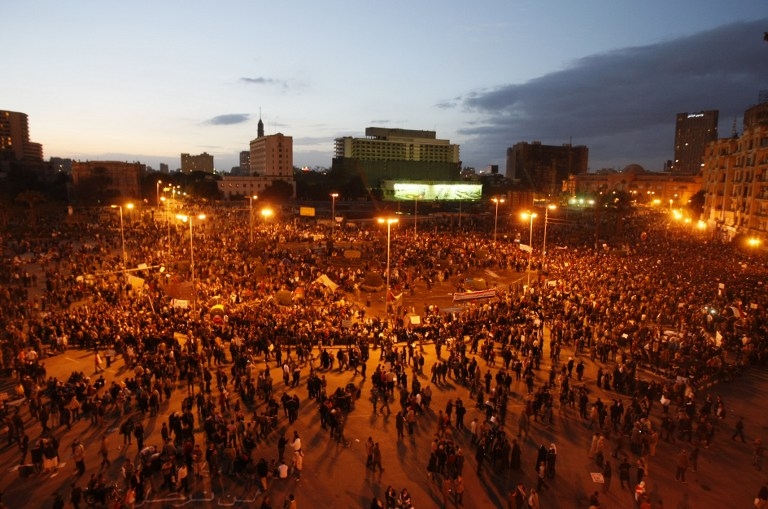The Arab Spring was neither a spring nor only just for Arabs

Today, 17 December 2016, it is exactly six years ago that Mohamed Bouazizi set himself ablaze opposite the governor's office in Sidi Bouzid. His gruesome act triggered the Tunisian revolution and a series of uprisings across the region, commonly and, in my opinion, wrongly, known as the Arab Spring.
It is a misleading term, first because it fails to recognise the many political and cultural differences within the Arab world and implies that the unrest that raged in countries as varied as Tunisia and Bahrain falls under one and the same umbrella.
Second, the term is derived from the 1968 Prague Spring, which refers to an attempt by the Czech communist party to introduce more civil liberties and follow a more independent course from Moscow, efforts that were brutally crushed by the Soviet army later that year.
What 'Spring' misses
The West has always upheld the Prague Spring as the pivotal moment which showed that the citizens of the former Soviet Union wanted the freedom and democracy the West enjoyed.
Now that may by and large be true. However, the circumstances and content of the Prague Spring were quite different from the so-called Arab Spring that started in 2010.
In 1968, the Cold War was in full swing. The Czechs were effectively occupied by Russia and formed an integral part of the Eastern Bloc. Moscow could not have them break away, as much as Washington could not allow, say, Italy go its own way. There was no foreign army occupying Tunisia in 2010, nor any Arab country for that matter.
More importantly, by the Arab uprisings being named after the Prague Spring they are strictly framed within a political narrative: a noble quest for freedom and democracy. In my opinion, they were not just about a fairer representation of power but also about a fairer distribution of wealth.
It is telling, in that sense, that Bouazzi, the very instigator of it all, did not set himself on fire with a call for democracy or a demand for the then Tunisian president, Ben Ali, to step down. Not at all.
Bouazzi, since the age of 10, had been a street vendor of vegetables to help his family make ends meet. In the morning of 17 December, a policewoman confiscated part of his wares because he did not possess a permit. Furious, the 26-year-old tried to see the governor to get his goods back. In vain.
"How do you expect me to make a living?" he reportedly cried out before soaking himself with gasoline. With no future to live for, he set himself alight in protest against the perceived injustice. He died in hospital a few days later.
Following his self-immolation, decades of political repression, police brutality, rising unemployment levels and blatant corruption, personified by Ben Ali’s wife, Leila, and her family, erupted into mass protests and a call for change.
The forgotten protests and grievances
The Tunisian revolt came as a shock to the West. Although Tunisia was a police state, Western politicians and journalists routinely referred to it as a moderate state, a model for the Muslim world even. The EU in 1995 had signed an Association Agreement with Tunisia, which allowed for extensive trade liberalisation.
In early 2011, French foreign minister Michele Alliot-Marie even offered Ben Ali help to restore order. But it was too late.
On 14 January, 2011, Ben Ali and his wife fled to safety, and immunity, in Saudi Arabia. He had hardly landed in Jeddah when Egypt exploded.
Today, we all know the heroic images of Egyptians, young and old, occupying Tahrir Square, resisting police and even camel raids, while calling for president Hosni Mubarak to step down and the 30-year state of emergency to end.
Much less known are the doctors, bus drivers, textile workers and thousands and thousands of other labourers who went on strike and crippled the country. Or the fact that Egypt's workers had been regularly going on strike since at least 2000, even though gatherings of more than five people were strictly banned in Egypt.
Joel Beinin, professor of Middle East history at Stanford University, estimated that in the decade prior to the January 25 revolution, more than two billion people participated in over 3,000 strikes, sit-ins and other forms of protest.
Not just Prague, not just Arab
One should know that Egypt under Mubarak really was a poster child for liberalisation and privatisation in the Arab world. Dismantling Gamal Abdel Nasser's state-led economy had started under Anwar Sadat and was pretty much completed under Mubarak with the aid of Washington and Brussels.
Between 1991 and 2009, Mubarak sold off nearly 400 state companies for a bit more than $9bn. Many ended up in the pockets of the country’s wealthy and often corrupt elite, including the military, which by January 2011 controlled some 25 percent of the Egyptian economy.
At the same time, according to the UN, around a quarter of the population lived below the poverty line of $2 a day, while 17 percent of the population faced daily food insecurity. And yet, year after year, the IMF and World Bank heaped praise on Mubarak, his cronies and their neoliberal policies.
They should have known better. As the top of the pyramid grew ever narrower and richer, and life for most Egyptians deteriorated, the chants during strikes and demonstrations were not just directed against Mubarak but also against "the fund" and "the bank".
The uprisings in Bahrain, Libya, Yemen and Syria each had their own characteristics and in many ways had little in common with their Tunisian and Egyptian counterparts, the sources of the so-called Arab Spring.
As they were also directed against the financial status quo, the uprisings, in that sense, have more in common with, for example, Occupy Wall Street in New York and the anti-austerity movements in Spain or Greece. The very inconvenient truth for the West is that the Arab Spring was not just a Prague Spring and, worse, was not just Arab.
- Peter Speetjens is a Dutch journalist who lived in Lebanon for 20 years, regularly travels to India and has a special interest in how 19th-century writers helped shape our conceptions of the world today.
The views expressed in this article belong to the author and do not necessarily reflect the editorial policy of Middle East Eye.
Photo: Egyptian demonstrators gather at dusk in Tahrir Square in Cairo on 31 January 2011, on the seventh day of protests against long term President Hosni Mubarak (AFP).
This article is available in French on Middle East Eye French edition.
New MEE newsletter: Jerusalem Dispatch
Sign up to get the latest insights and analysis on Israel-Palestine, alongside Turkey Unpacked and other MEE newsletters
Middle East Eye delivers independent and unrivalled coverage and analysis of the Middle East, North Africa and beyond. To learn more about republishing this content and the associated fees, please fill out this form. More about MEE can be found here.





